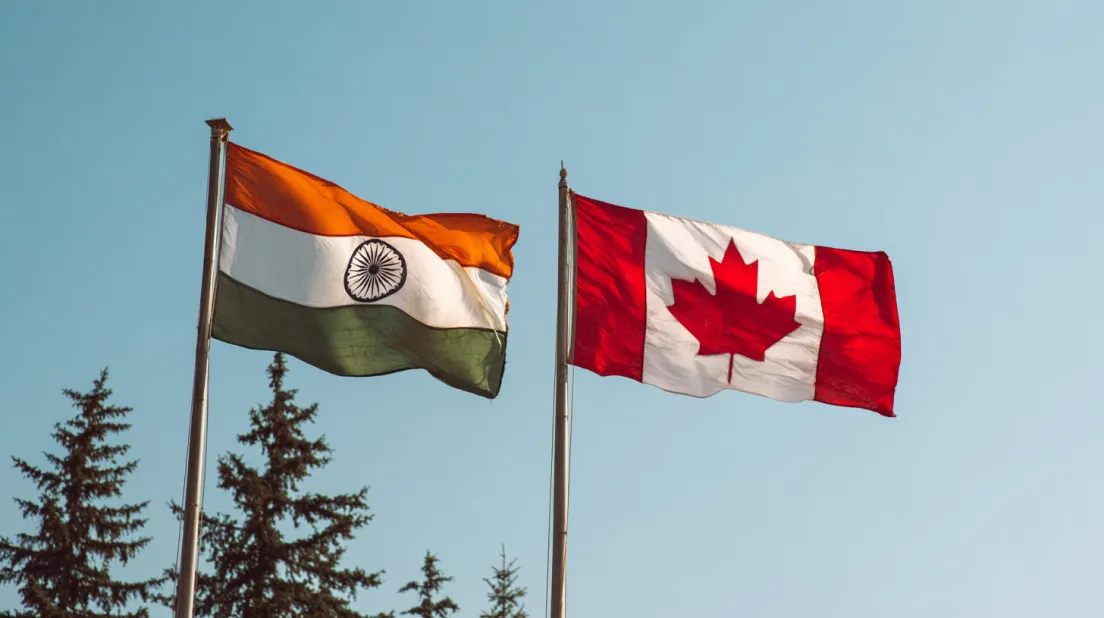As the trade and investment corridor between India and Canada continues to expand, businesses in both nations require a clear and predictable tax framework to operate effectively. The DTAA between India and Canada serves as this crucial foundation. This comprehensive agreement, in full form – the Double Taxation Avoidance Agreement, has been in effect since 1997. It is designed to methodically prevent the double taxation of income for companies and individuals. It provides the fiscal certainty necessary for businesses to plan long-term investments and operations with confidence.
DTAA Between India and Canada – A Quick Information
This bilateral treaty is essential for any business engaged in cross-border activities, establishing clear rules to prevent income from being taxed twice.
| Attribute | Details |
|---|---|
| Full Form | Double Taxation Avoidance Agreement |
| Countries | The Republic of India and Canada |
| Effective Since | May 6, 1997 |
| Income Types Covered | Business Profits, Dividends, Interest, Royalties, Fees for Included Services, Capital Gains, etc. |
| Key Forms | Tax Residency Certificate (TRC), Form 10F |
| Tax Relief Method | Foreign Tax Credit Method |
| Governing Bodies | Central Board of Direct Taxes (CBDT) in India, Canada Revenue Agency (CRA) in Canada |
Objective of the DTAA Between India and Canada
The primary objective of the DTAA agreement between Canada and India is to foster a healthy economic relationship by removing tax-related obstacles. It aims to provide tax certainty for foreign direct investment, streamline the taxation of international business profits, and encourage the flow of technology and services. By ensuring that businesses are not unfairly burdened by double taxes, the treaty promotes a level playing field and helps prevent fiscal evasion.
Unbeatable Price 5-Star Rated Partner! 2200+ Shades! Top Quality Paint Free Cancellation!

Get a rental agreement with doorstep delivery

Find the BEST deals and get unbelievable DISCOUNTS directly from builders!

5-Star rated painters, premium paints and services at the BEST PRICES!
Key Features of India-Canada DTAA
The agreement is defined by several foundational elements that businesses must understand to navigate their tax responsibilities effectively.
Scope of the Agreement
This treaty applies to any person or company that is a tax resident of India or Canada, or both. It covers taxes on income imposed by the central governments of both nations. For businesses, this means that profits, dividends, interest, and other forms of income earned across borders fall under the specific rules laid out in this agreement.
Who Can Claim DTAA Benefits?
To access the benefits of the DTAA, such as reduced withholding tax rates, a company must prove its tax residency. This is accomplished by obtaining a Tax Residency Certificate (TRC) from the tax authorities of its home country (the CRA in Canada or the Indian Income Tax Department). This certificate is the official document needed to validate a company’s claim for treaty benefits.
What are the Tax Relief Methods Used in India-Canada DTAA?
The agreement uses the credit method to prevent double taxation. Consider an Indian company that provides services in Canada and pays C$10,000 in Canadian tax on the profits. When filing its return in India, the company can claim a credit for the C$10,000 tax paid in Canada against its Indian tax liability on the same income. This ensures that the profit is not taxed in full by both countries. Understanding the general Income tax rules for NRIs and corporations is vital in this context.
DTAA Rates Between India and Canada
The treaty sets maximum tax rates that can be applied to certain types of income, which is a critical detail for corporate financial planning. The DTAA rate between India and Canada is notably tiered for several income streams.
| Income Type | DTAA Tax Rate | Article Reference |
|---|---|---|
| Dividends | 15% (for >10% shareholding) or 25% (all other cases) | Article 10 |
| Interest | 15% | Article 11 |
| Royalties & Fees for Included Services | 10% (for equipment use) or 15% (all other cases) | Article 12 |
Core Concepts for Businesses in the DTAA
For any company operating between India and Canada, understanding the following treaty concepts is essential for compliance and strategic planning.
What is a Permanent Establishment (PE)? (Article 5)
A central concept in the DTAA is the Permanent Establishment or PE. A Canadian company is generally not taxed in India on its business profits unless it has a PE in India. Article 5 defines a PE as a fixed place of business, which includes:
- A place of management, a branch, or an office.
- A factory or a workshop.
- A mine, oil or gas well, or quarry.
- A construction or installation project that lasts for more than 120 days.
- The furnishing of services within a country for more than 90 days in a 12-month period.
Establishing a PE is a critical threshold that triggers tax liability in the host country.
Taxation of Royalties & Fees for Included Services (Article 12)
This article is crucial for technology, engineering, and consulting firms. It makes a distinction between royalties and “Fees for Included Services” (FIS). FIS are payments for technical or consulting services that also involve making technical knowledge or skills available to the client. The DTAA rate for technical services between India and Canada is 15%. However, for royalties paid for the use of industrial, commercial, or scientific equipment, a lower rate of 10% applies. All international remittances for these services from India must follow specific banking procedures, which require Understanding Form 15CA and 15CB for NRIs and corporate remitters.
Taxation for Directors and Professionals (Articles 16 & 14)
The treaty provides specific guidance for high-level professionals. According to Article 16 of the DTAA between India and Canada, fees paid to a resident of Canada serving on the board of directors of an Indian company can be taxed in India. Additionally, Article 14 on Independent Personal Services addresses income earned by firms of lawyers, engineers, or accountants. Such income is taxed in the host country if the firm has a fixed base there or if the personnel stay for more than 183 days in a fiscal year.
Managing Corporate Assets and Operations
Canadian companies investing in India often need to acquire property for offices or factories. This involves careful planning and an understanding of Indian regulations. Choosing a location from the Top cities in India for NRI property investment is often a starting point for businesses as well.
Delegating operational authority to a local manager often requires a Power of Attorney (PoA). It is useful to understand the difference between a power of attorney and a property manager to assign the right level of legal and operational control.
Article 25: Resolving Disputes and Eliminating Double Taxation
While Article 25 primarily outlines the Mutual Agreement Procedure (MAP), which is a formal process for resolving tax disputes between the two countries, its ultimate goal works in concert with Article 23 to eliminate double taxation. If a company believes it is being taxed unfairly, it can approach the competent authorities under MAP. However, the day-to-day prevention of double taxation happens via the credit method detailed in Article 23, ensuring businesses are not taxed twice on the same income. For those who wish to study the complete text, a search for the DTAA between India and Canada PDF on official government portals is advisable.
How NoBroker Can Help with NRI Services?
For Canadian companies sending employees to India or for their directors managing personal investments, navigating the Indian property market can be complex. NoBroker offers exclusive services for NRI property owners that can be invaluable. We assist with everything from finding accommodation and managing rental agreements to handling legal paperwork for property purchases, ensuring a smooth transition and secure management of assets for your personnel in India.
Know More How DTAA Works in India with Different Countries:
Frequently Asked Questions
Ans: Yes. A construction project lasting more than 120 days (approximately 4 months) is considered a Permanent Establishment under Article 5 of the treaty, making its profits taxable in India.
Ans: These are payments for technical or consultancy services where the provider doesn’t just perform a task but also makes their technical knowledge, experience, or skills available to the client.
Ans: Under Article 11 of the DTAA, the tax on interest payments is capped at 15% of the gross amount of the interest.
Ans: As per Article 13, capital gains from the sale of shares of an Indian company may be taxed in both India and Canada. Canada will then provide a foreign tax credit for the taxes paid in India.
Ans: The official document can be found on the websites of India’s Income Tax Department and Canada’s Department of Finance or Canada Revenue Agency (CRA).
Loved what you read? Share it with others!
 Suju,Author
Suju,Author
I’m Suju, an alchemist turned content writer from the enchanting land of Coorg. I love infusing my words with a touch of magic, creating engaging blogs, and informative articles And I have a deep passion for crafting beautiful poems.
Source link




